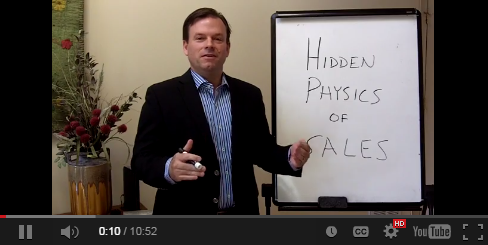Saying NO
As a business coach, I found this article from the Wall Street Journal on saying “no” to be very interesting. Nearly everyone I know, including myself, friends, colleagues, and all of my clients, from the small business owner to the corporate CEO, faces this challenge on a regular basis. Saying no effectively is ultimately about being clear on priorities, what you want to do with your life, and what fits within that context. A couple of observations about the article:
 I find it interesting that the experts quoted in the article are psychologists, not coaches. The strategies they suggest are to practice ways of saying no politely, buying time, and managing the feelings of guilt. As a coach, and in my own personal life, I have found this approach to be ineffective, or at best unsatisfying. If you are trying to manage guilt or coaching clients to manage their guilt, then you need to examine the core belief that causes you to feel guilty in the first place. Feeling guilty requires your assent and the entire system depends on you buying into it. Why should I feel guilty for choosing how to use my own life? The less I buy into the entire guilt complex, the easier it is to say no.One strategy they suggest is to say “Sorry, I’m not able to do this.” I’ve found saying “I’m not able to do this” doesn’t work for me. Why? Because it isn’t true. I actually could if I chose to. The real truth is that I choose not to. Another strategy from the “experts” is to blame outside circumstances for why you can’t do something. Seriously? If you use this strategy, you are allowing victim behavior into this little sliver of your life. But here’s the rub — how you do anything is how you do everything. Don’t blame outside circumstances, ever. Honor your own choices. What works for me is to say internally: I do not choose to do this right now. The more clear I am in this response the more I’m in alignment with myself and then I am clearer and stronger in the interaction with the person making the request. I want to be clear that I’m declining a request out of choice, not ability. How I communicate that can be as simple as “No, thank you.” Or “No, this is not a good fit for me.”Key Tip for effective leadership, sales, and interpersonal communication. If you make a request or offer and the other person says “I want to think about it” as this article suggests, very often they are simply using a socially acceptable strategy to avoid saying no because they are afraid to do so. When someone says this to me, I immediately recognize it as a lie — a polite lie, and invite them to say no directly. This invitation by itself often creates a breakthrough for that person and in our relationship, since they are learning to be more truthful and authentic in their communication. I am more interested in getting to the truth of the situation.
I find it interesting that the experts quoted in the article are psychologists, not coaches. The strategies they suggest are to practice ways of saying no politely, buying time, and managing the feelings of guilt. As a coach, and in my own personal life, I have found this approach to be ineffective, or at best unsatisfying. If you are trying to manage guilt or coaching clients to manage their guilt, then you need to examine the core belief that causes you to feel guilty in the first place. Feeling guilty requires your assent and the entire system depends on you buying into it. Why should I feel guilty for choosing how to use my own life? The less I buy into the entire guilt complex, the easier it is to say no.One strategy they suggest is to say “Sorry, I’m not able to do this.” I’ve found saying “I’m not able to do this” doesn’t work for me. Why? Because it isn’t true. I actually could if I chose to. The real truth is that I choose not to. Another strategy from the “experts” is to blame outside circumstances for why you can’t do something. Seriously? If you use this strategy, you are allowing victim behavior into this little sliver of your life. But here’s the rub — how you do anything is how you do everything. Don’t blame outside circumstances, ever. Honor your own choices. What works for me is to say internally: I do not choose to do this right now. The more clear I am in this response the more I’m in alignment with myself and then I am clearer and stronger in the interaction with the person making the request. I want to be clear that I’m declining a request out of choice, not ability. How I communicate that can be as simple as “No, thank you.” Or “No, this is not a good fit for me.”Key Tip for effective leadership, sales, and interpersonal communication. If you make a request or offer and the other person says “I want to think about it” as this article suggests, very often they are simply using a socially acceptable strategy to avoid saying no because they are afraid to do so. When someone says this to me, I immediately recognize it as a lie — a polite lie, and invite them to say no directly. This invitation by itself often creates a breakthrough for that person and in our relationship, since they are learning to be more truthful and authentic in their communication. I am more interested in getting to the truth of the situation.




